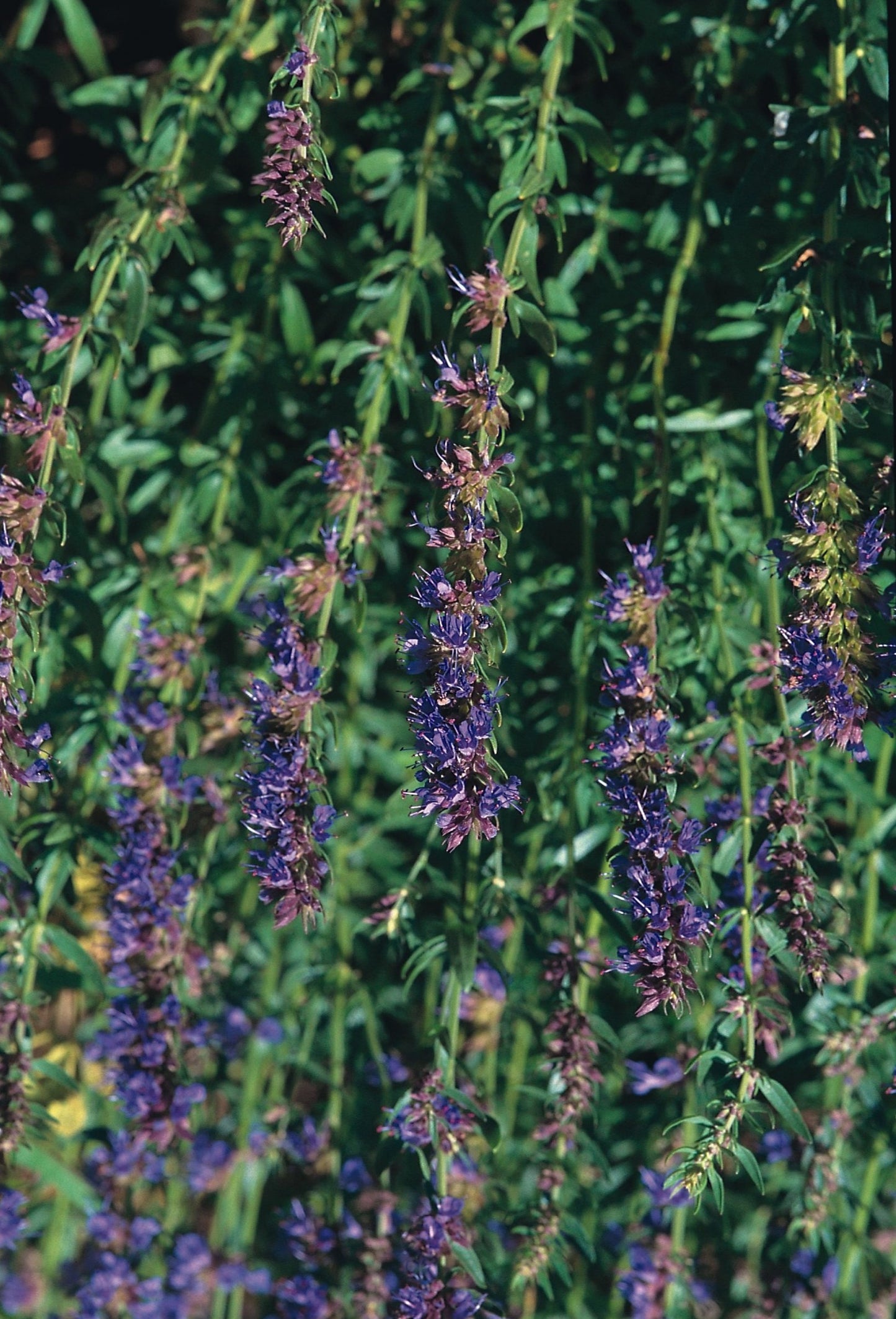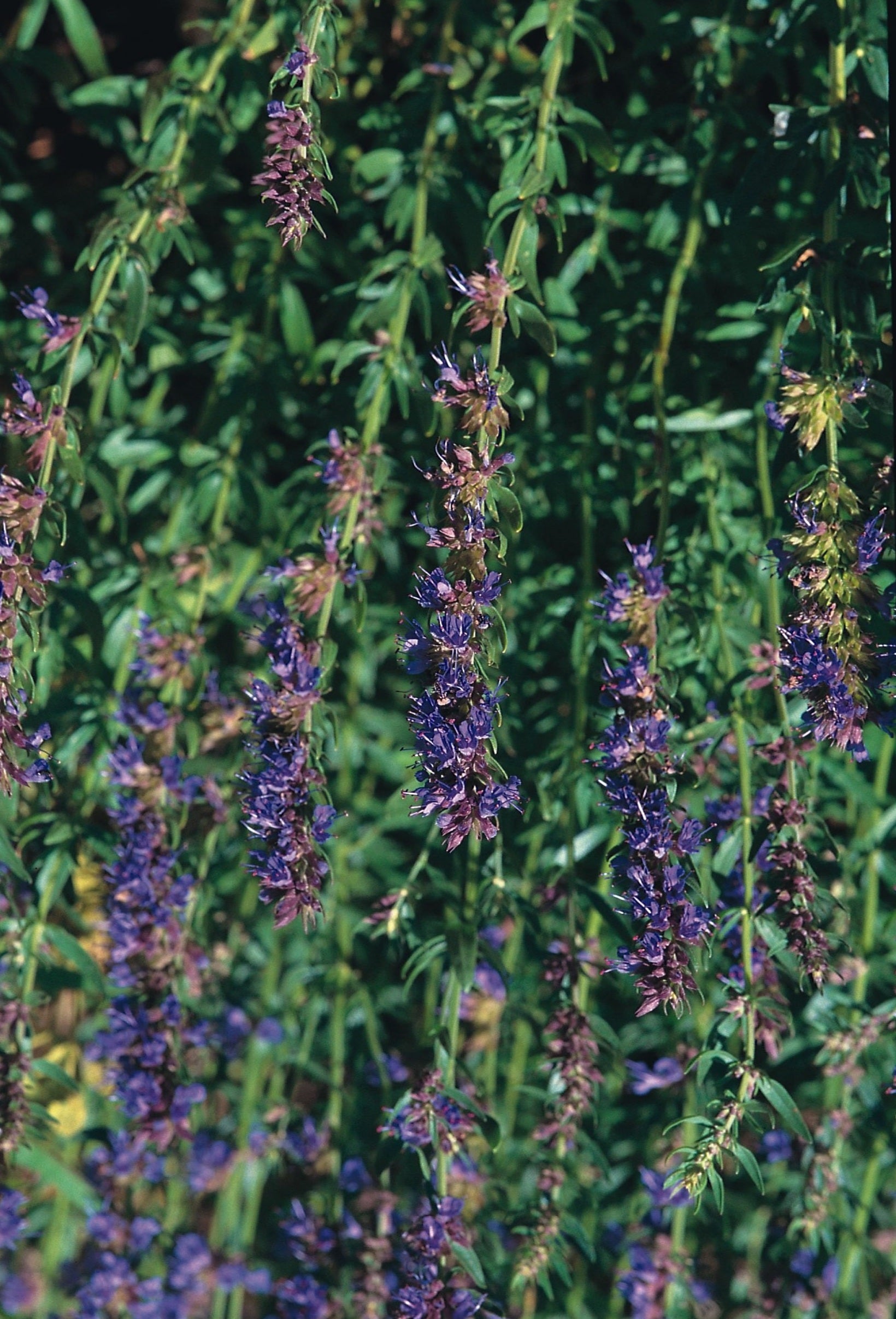Hyssop
Hyssop
Packet Size: 50 seeds
Couldn't load pickup availability
Hyssop is one of those handy plants you’ll wonder why you haven’t grown before. This bushy, semi-evergreen herb has aromatic leaves and striking blue flower spikes that bees absolutely love. It’s also said to help keep butterflies away from brassicas in your veg patch. Historically, hyssop has been used medicinally, but a word of caution: it’s best avoided if you’re pregnant or nursing.
You can grow hyssop as a standalone plant in borders or herb gardens, keep it trimmed as a neat flowering hedge, or let it grow naturally up to about 60cm tall. It also works well in pots. This perennial will come back year after year, bringing scent and pollinators to your garden.
This variety is part of our naturally nurtured range, the seed comes from an organic source
🌱 Seasonal Growing Guide
SPRING: sow the seeds in trays or plugs March to May indoors, or from May to June outdoors, seed depth 5mm covering with perlite (14-21 days to germinate), take care not to overwater once they have germinated. When large enough to handle pot up and grow on
SUMMER: pot on or plant out after frost danger is over, space 30-45cm apart or for a flowering hedge space at 25-30cm (cut back flower spikes in spring as they provide winter interest). Harvest leaves of established plants. See below for information on edible uses
WINTER: protect with fleece or straw if very cold weather is expected.
📌USES:
WILDLIFE FRIENDLY
- Much loved by short-tongued bumblebees, as well as honeybees and other pollinators.
- The small, nectar-rich flowers are ideal for summer foraging.
- Attracts night-flying insects, which in turn help support bat populations by providing a reliable food source.
- Included by the RHS on their Plants for Pollinators list.
- A great addition to mixed wildlife-friendly borders, particularly useful in dry or sunny spots.
EDIBLE: caution - you should not consume Hyssop whilst pregnant or nursing
- Add the flowers sparingly to salads
- Young foliage can be used to flavour food and adds a distinctive flavour to soups, fish, meat, stews and salads too. Can also be used in jellies or to flavour liqueurs
- It is said that using a small amount of chopped leaves with fatty meats can aid digestion
- The leaves can be used as an alternative to sage in a stuffing
- Only a few leaves are needed at any time as Hyssop is a strong seasoning.
- The flavour of Hyssop is spicy, with a slightly bitter edge and brings to mind a blend of mint, sage and oregano
- Dry the leaves for use in tea. You can mix them with lemon balm or spearmint for a lighter mingled flavour.
HISTORICAL
- Hyssop was used for purgation (religious purification) in Ancient Egypt
- Used since Roman times as a medicinal herb for coughs and as an antiseptic
- In the Middle Ages, hyssop was a stewing herb
OTHER
- As a companion plant to brassicas – said to deter the troublesome White butterflies.
- As a flowering hedge, in borders or a specimen plant
- Medicinally the flowers are infused to make tea for throat and lung complaints.
- The leaves have antiseptic properties - a wash made from the leaves can be used for cuts and bruises.
- Please Note: we do not promote the medicinal use of plants – guidance and information should be sought elsewhere.

Collapsible content
Sowing
- Mar
- Apr
- May
Harvesting / Flowering
- Jun
- Jul
- Aug
- Sep
- Oct

